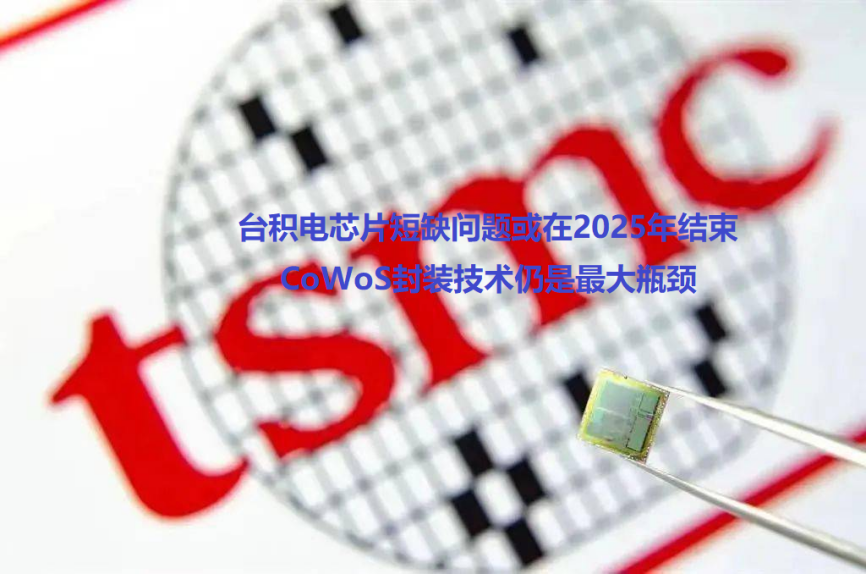In the map of the global semiconductor industry, TSMC is undoubtedly a bright pearl. However, the chip giant's recent revelation on an earnings call has sparked new concerns in the industry about the tight supply of advanced chips. TSMC CEO Wei Zhejia pointed out that the company's tight supply of advanced chips is expected to continue until 2025-2026. This prediction has not only aroused widespread attention in the market, but also made people full of expectations and questions about the future supply of chips. In this article, China Exportsemi Web will try to analyze the challenges faced by TSMC, its coping strategies, and the potential impact of this phenomenon on the entire industry.
TSMC's tight supply status
As the world's largest chip foundry, TSMC's production capacity and supply directly affect the production of global electronic devices. Wei Zhejia's speech on the earnings call is undoubtedly a direct reflection of the current tight chip supply. Although TSMC has more than doubled the production capacity of CoWoS (Chip on Wafer on Substrate) packaging technology in 2023, this technology is still the biggest bottleneck restricting chip supply.
The bottleneck of CoWoS packaging technology
CoWoS technology is an advanced packaging technology that enables the integration of multiple chips on a silicon interposer, resulting in higher performance and smaller size. However, the complexity and high cost of this technology in the production process make it a major factor limiting the supply of TSMC chips. Although CoWoS production capacity has more than doubled from last year to this year, it could be doubled again next year in order to further ease supply constraints, Wei Zhejia said.

Figure: TSMC's chip shortage may end in 2026, and CoWoS packaging technology is still the biggest bottleneck
TSMC's response strategy
In order to alleviate the tight supply of advanced chips, TSMC is taking a number of measures. First of all, the company is working with overseas partners to increase supply. Plans to build factories in United States Arizona and Japan Kumamoto prefectures are examples of this strategy. These factories are partly funded by partner investors or government subsidies, demonstrating TSMC's important position in the global semiconductor industry chain.
In addition, TSMC is also increasing R&D investment to promote innovation in packaging technology. According to 2023 data, TSMC's R&D spending reached a record $3 billion, up 20% year-on-year. This continuous technological innovation and capacity expansion is key for TSMC to cope with supply constraints.
TSMC's management pledged in July last year to double the packaging capacity of CoWoS chips by the end of 2024 to meet the growing demand for AI system accelerators. TSMC said in a recent financial conference that it will continue to increase production capacity next year, and it is expected that the compound annual growth rate of the CoWoS field will exceed 50% in the next five years, and the company has prepared a new generation of CoWoS packaging.
Impact on the industry
TSMC's tight supply has had a profound impact on the entire semiconductor industry. On the one hand, this has accelerated innovation and investment in advanced packaging technologies within the industry. On the other hand, it has also prompted other chipmakers to increase their R&D efforts in order to gain an advantage over the competition. For example, competitors such as Intel and Samsung are also aggressively expanding their advanced process technologies and packaging capabilities to meet market demands.
TSMC's technological breakthrough
TSMC has made significant technological breakthroughs in increasing the production capacity of CoWoS packaging technology. Goldman Sachs analyst Bruce Lu pointed out in the report that TSMC's CoWoS production capacity will double consecutively in 2024 and 2025, and it is expected to double production capacity more than expected by 2025. In addition, TSMC is also advancing the fan-out panel-level packaging (FOPLP) process and has established a dedicated R&D team and production line. These technological breakthroughs have not only improved TSMC's packaging capabilities, but also brought new development directions for the entire industry.
Conclusions and prospects
TSMC's supply crunch is a complex challenge that spans multiple aspects such as technology, capacity, and global supply chain. Although it is difficult to completely solve the problem in the short term, TSMC is actively seeking solutions through technological innovation and global layout. Looking ahead, with the advancement of technology and the expansion of production capacity, we have reason to believe that TSMC will gradually achieve a balance between supply and demand and contribute to the stable development of the global semiconductor industry.
TSMC's move is not only an optimization of its own supply chain, but also an important boost to the entire semiconductor industry. As 2025 approaches, we expect TSMC to bring a new dawn to solve the tight chip supply situation and promote the further development of the global electronic equipment manufacturing industry.






